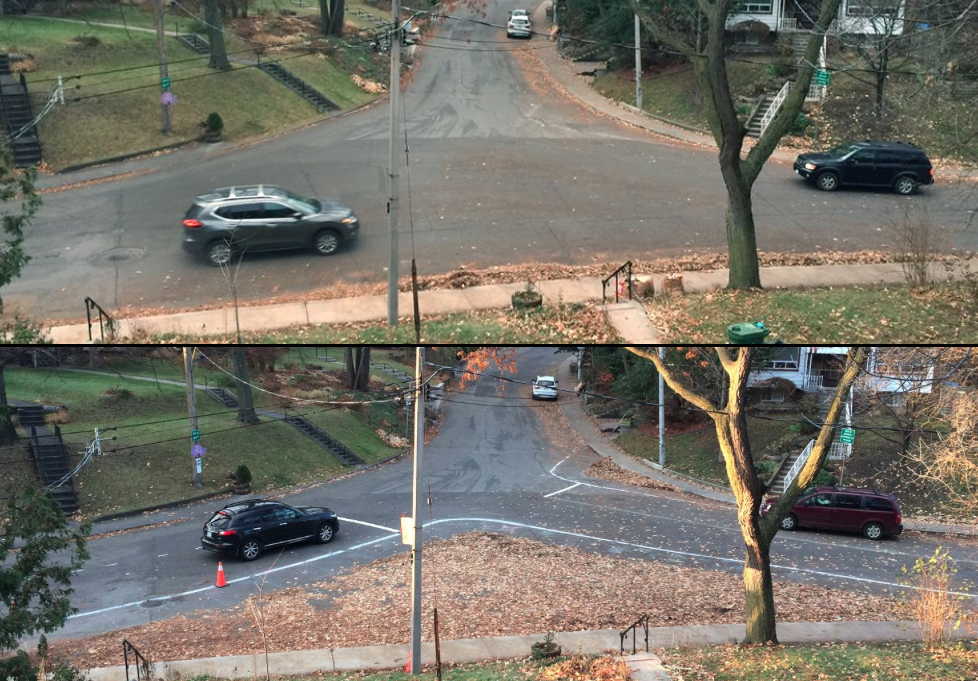You've heard of the sneckdown -- when traffic after a snowstorm creates patterns that reveal how much space can be claimed for pedestrians. Now a group of neighbors in Toronto has made "nature's traffic calming" a multi-season activity.
Dave Meslin wanted to demonstrate how a local intersection could be transformed into a safer, more neighborhood-friendly space. He and some of his neighbors went to work with some leaves and chalk, Meslin wrote on Facebook:
Using only chalk and leaves (and maintaining all existing road widths at 28 feet) we revealed a surplus surface area of 2,000 square feet which could be transformed into a parkette, new sidewalks, and much shorter/safer crossings.
The "leafy neckdown" is the talk of Toronto, reports BlogTO. Meslin told the blog's Lauren O'Neil that prior to the group's intervention, drivers never seemed to understand where to stop, even though the intersection has three stop signs. But the chalk lines seem to have clarified what drivers are supposed to do, and it feels a lot safer.
Meslin says he'd like to see the street permanently transformed, with the excess pavement turned into grass.






